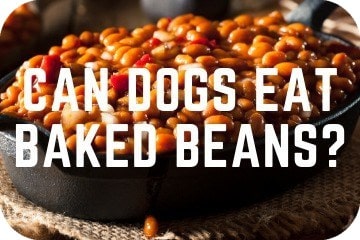
Can dogs eat baked beans? No. Whether or not baked beans are toxic to dogs depends on the ingredients. Regardless, they are not healthy and should not be fed to dogs.
The beans themselves are usually safe for dogs, and tomatoes are also ok for dogs in small amounts.
However, most varieties may contain ingredients that could be toxic, like xylitol, onion, or garlic to enhance the flavor.
Despite this, all types of baked beans are not healthy for dogs due to the high amount of salt and sugar. You should not feed your dog baked beans.
What Should I Do If My Dog Has Eaten Baked Beans?
- Determine the quantity eaten.
- Check the ingredients list.
- Xylitol is the main ingredient you need to be concerned about. This can be toxic in any amount. Contact a veterinarian or the poison helpline if xylitol is present.
- Onion and garlic may also be present; the level of toxicity depends on the size and weight of the animal and the amount consumed.
- If the baked beans don’t contain any toxic ingredients, your dog may still have gastrointestinal upset. Keep an eye, and if your dog is displaying any unusual behavior, contact a veterinarian for advice.
Busy? Get Your Hands Paws On The Answers Quickly…
- Nutritional Information And Common Ingredients In Baked Beans And The Benefits And Risks To Dogs
- Can Dogs Eat Beans? Which Beans Can Dogs Eat?
- Bean Based Dog Treats
- FAQs
NUTRITIONAL INFORMATION AND COMMON INGREDIENTS IN BAKED BEANS AND THE BENEFITS AND RISKS TO DOGS
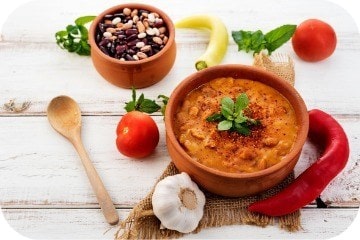
Navy Beans (haricot beans) – NOT TOXIC (in moderation)
Once cooked, these beans are safe in moderation.
Benefits:
Fiber – They contain a considerable amount of fiber, which is good for digestion and to prevent constipation.
B Vitamins – These are vital for overall health.
Risks:
Lectins – Beans produce lectins to protect themselves. When consumed in large quantities they can be dangerous to dogs. By soaking and rinsing the beans properly, you can help to reduce the amount.
Gas – The old saying ‘beans, beans, good for the heart, the more you eat, the more you fart’ didn’t come from nowhere. Beans contain fiber, and the fiber is fermented in the gut. This can cause gas as well as stomach upset, including vomiting and diarrhea.
Tomatoes – NOT TOXIC (with precautions)
It is a common misconception that the tomato fruit is harmful to dogs. This is not the case. The red fruit is ok to consume (however, it does still contain a small amount of toxin, but is thought to be safe is small quantities).
However, the stem, leaves, and young green tomatoes contain solanine, which is poisonous to dogs. But, it is thought that a considerable amount needs to be ingested by dogs to cause toxic effects (link) (link).
Signs Of Toxicity Include:
- Vomiting
- Diarrhea
- Cardiac effects
- Loss of coordination
- Muscle weakness
- Tremors
- Seizures
Sugar – NOT TOXIC (but not recommended)
Dogs do not need sweetened food (including baked beans) for energy. They require sugar, which is broken down from carbohydrates (such as sweet potato, vegetables, grains, beans, etc.)
Side Effects Of Excess Sugar:
Weight Gain – Sugary food is usually high in calories. These are empty calories that do not fill hunger, meaning your dog will continue to eat. This can easily lead to gaining weight. Excess weight can have a significant impact on your dog, including joint problems, heart conditions, and lethargy.
Dental Health – Sugar reacts with bacteria to produce acid, which erodes the teeth. A high sugar diet can lead to cavities and avoidable dental work.
Hyperactivity – Dogs usually have a lower tolerance for sugar than humans. This means that just a small quantity can lead to a change in behavior, often for the worst.
Vomiting and Diarrhea – Any new food can lead to an upset stomach in dogs. It is not uncommon for a dog to experience vomiting and diarrhea after consuming sweet treats.
Salt – NOT TOXIC (but not recommended)
Salt is vital to help regulate your dog’s fluid balance and aid digestion. But, they should receive the necessary requirements from their regular dog food. Added salt is not usually required.
According to tails, a healthy amount of sodium in food is around 0.25g-1.5g per 100g.
However, if your dog suffers from kidney disease, heart problems, or liver issues, you may need to put your dog on a lower salt diet. This can be discussed with your veterinarian, and an appropriate alternative dog food can be selected.
If your dog consumes a considerable amount of any salty food and has no way to quench his thirst, he may experience salt poisoning.
Symptoms Of Salt Poisoning Include:
- Extreme thirst
- Frequent urination
- Confusion
- Lack of appetite
- Nausea
- Vomiting
- Diahrrea
- Seizures
- Coma
If your dog has consumed high salt food and is experiencing any of the symptoms above, contact a veterinarian and ensure they have a constant supply of clean and fresh water.
Garlic or Onion Powder – TOXIC
Often flavorings are added to baked beans to enhance the taste. This is commonly onion and garlic powder.
All parts of onion and garlic can be harmful to dogs. It is thought that powdered varieties are more potent and can be more dangerous.
Both onion and garlic belong to the allium family. The allium family contains n-propyl disulfide. This is toxic to dogs. If a considerable amount is consumed in one go or little, and often it can cause anemia.
N-propyl disulfide damages the red blood cell, reducing the amount of oxygen they can carry. It can also cause them to rupture. The compound tricks the cells into thinking they are invaders, destroying them, which results in anemia.
Early Signs Of Anemia Include:
- Pale gums
- Weakness
- Lethargy
- Lack of appetite
- Black stools
If you suspect your dog has eaten a dangerous amount or is showing any unusual activity, including those listed above, contact a veterinarian or poison helpline.
If you’re looking to learn more about the allium family and their effects on dogs, check out our article ‘Can Dogs Eat Leeks‘ here.
Xylitol – TOXIC
Xylitol is a sugar-free sweetener. It is commonly used in ‘low-sugar’ varieties of baked beans.
Xylitol can be processed by humans but is highly dangerous to dogs. This is because dogs cannot distinguish xylitol from sugar.
When xylitol is consumed, a dog’s body sees this as a large consumption of sugar, which in turn releases insulin.
As there actually hasn’t been any sugar consumed, this leads to hypoglycemia.
Signs Of Xylitol Poisoning:
- Vomiting
- Being unsteady with trouble walking or standing
- Lethargy
- Seizures
- Liver failure
- Coma
If you suspect your dog has consumed anything that contains xylitol, you must call your veterinarian or poison hotline as soon as possible
.CAN DOGS EAT BEANS? WHICH BEANS CAN DOGS EAT?
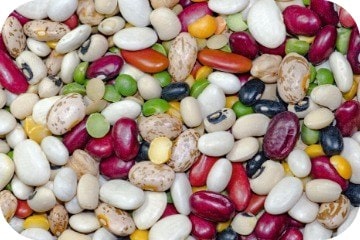
Quick Notes On Feeding Dogs Beans:
- All beans should be fed plain.
- Dogs should eat beans in moderation, they can cause your dog to be gassy.
- Make sure the beans are rinsed before cooking and thoroughly cooked to help remove any toxins.
- Use fresh beans. Canned beans usually contain additives that are unhealthy for dogs.
- Beans should only be used as a complementary food for dogs and not used as a primary protein in place of quality meat.
- Any treat should only make up 10% of a dogs’ diet. Their regular dog food should contain all of the nutrients they require.
- If you are feeding your dog beans for the first time, introduce them slowly into their regular dog food as any new food can cause sickness and diarrhea.
Types Of Beans Suitable For Dogs:
Green Beans – These are by far the most popular type of bean fed to dogs. However, they are not an actual bean but a legume. They are low in calories, so work great for treats if your dog is trying to lose weight. They are also packed full of vitamins, including B6, A, C, and K.
Kidney Beans – These are nutritious beans, containing a high amount of protein, fiber, and a variety of vitamins and minerals. They are safe once rinsed and thoroughly cooked. However, raw kidney beans can cause toxicity due to phytohaemagglutinin. Kidney bean poisoning can occur in both humans and animals. Symptoms include vomiting and diarrhea. In serve cases, your dog may need to see a veterinarian.
Chickpeas (garbanzo beans) – Chickpeas are harmless for dogs in moderation. They contain fiber, carbohydrates, and protein. They can be beneficial for weight loss as they are low in calories, keeping your dog fuller for longer. They can relieve constipation and help to express a dogs’ anal glands due to the amount of fiber present. Check out our post ‘Can Dogs Eat Hummus’ for more information on chickpeas.
Black Beans – Black beans are fine for dogs; they contain iron and calcium, which is beneficial for maintaining bone strength. Black beans also contain selenium, a mineral that can help detoxify cancer-causing compounds and prevent inflammation. Check out our post ‘Can Dogs Eat Black Beans’ for more information (link).
Soy Beans – Common in a plant-based diet, soybeans are used to make tofu and soy milk. They contain a considerable amount of protein, which is beneficial for muscle growth and maintenance. However, they do contain phytoestrogens, which can lead to a hormone imbalance in dogs.
Pinto Beans – These beans are a source of protein, and they also contain a considerable amount of fiber, which is excellent for digestion and can help your dog feel fuller for longer.
Lima Beans (or butter beans) – Lima beans are considered safe to feed your dog. They are low-fat and high in plant-based protein. They contain a high amount of fiber which can be helpful in regulating blood sugar levels (link).
What Beans Can Dogs Not Eat?
Most beans are suitable for dogs in moderation, once rinsed, cleaned, and cooked.
Avoid the following:
- Any beans that are flavored or have added ingredients (like chili beans or taco beans).
- Coffee beans should also be avoided as caffeine can be dangerous to dogs. Coffee beans can cause increased heart rate, hyperactivity, and seizures.
- Broad beans (or fava beans) contain PHA which is harmful to dogs. It can cause vomiting and diarrhea.
BEAN BASED DOG TREATS
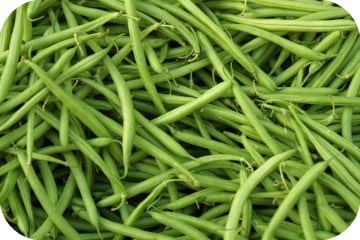
Crunchy Green Beans, inspired by SkinnyMs.
Ingredients:
- 5 cups green beans
- 1 tbsp coconut oil
Directions:
1. Preheat oven to 170 degrees F (75 degrees C) and line a baking sheet with parchment paper.
2. Add green beans and oil to a large ziplock bag and shake to cover the beans with oil.
3. Spread the beans onto the baking sheet.
4. Bake for 8 hours. After 8 hours, turn the oven off, leave the beans inside.
5. Do not remove until the beans are cold. Once cold, store, or serve.
Pumpkin and Chickpea Treats, inspired by Kiki Kane
Ingredients:
- 1 cup chickpea flour + extra for rolling
- 1/2 cup pure pumpkin puree
- 2 tbsp 100% peanut butter
Directions:
1. Preheat oven to 350 degrees F (176 degrees C) and line a baking sheet with parchment paper.
2. Mix all the ingredients together in a large bowl.
3. Roll to a 1/4-inch thick and cut into treat sized pieces.
4. Bake for 20-25 minutes, or until crisp.
5. Allow to cool before serving.
FAQS
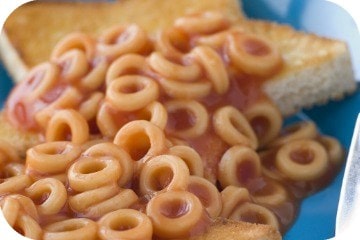
Can dogs eat spaghetti hoops?
No, for the same reason as baked beans. Spaghetti hoops contain a high amount of salt and sugar, which are not recommended for dogs. There is also the possibility of containing toxins like xylitol and onion or garlic powder.
Can dogs eat canned beans?
It depends. Canned beans are usually high in sodium, which is not suitable for dogs. If the beans are plain with no added ingredients, they should be ok once they are thoroughly rinsed and cooked. However, it is always best to use beans from the vegetable section rather than canned.
Will beans hurt dogs?
It depends. Plain, cooked beans can cause gastric upset due to the fiber level. You must also be careful of beans with added ingredients, as these can be harmful to dogs. Uncooked beans can also contain toxins that can be dangerous to dogs.
Looking for more pawsome posts? Check these out…
Can Dogs Eat Lettuce?
How To Make A Snuffle Mat
When Do Puppies Lose Their Teeth?
Can Dogs Eat Broccoli?
Can Dogs Eat Watermelon?
Disclaimer: Each dog is different, and every circumstance is different. All efforts have been made to provide accurate information. However, it is not provided by a qualified Veterinarian, Veterinarian Surgeon, or Behaviorist. The information provided is purely educational. The information should not be used as an alternative or substitute for medical care. If you have any health or medical concerns, contact a qualified Veterinary Surgeon or Veterinarian immediately.
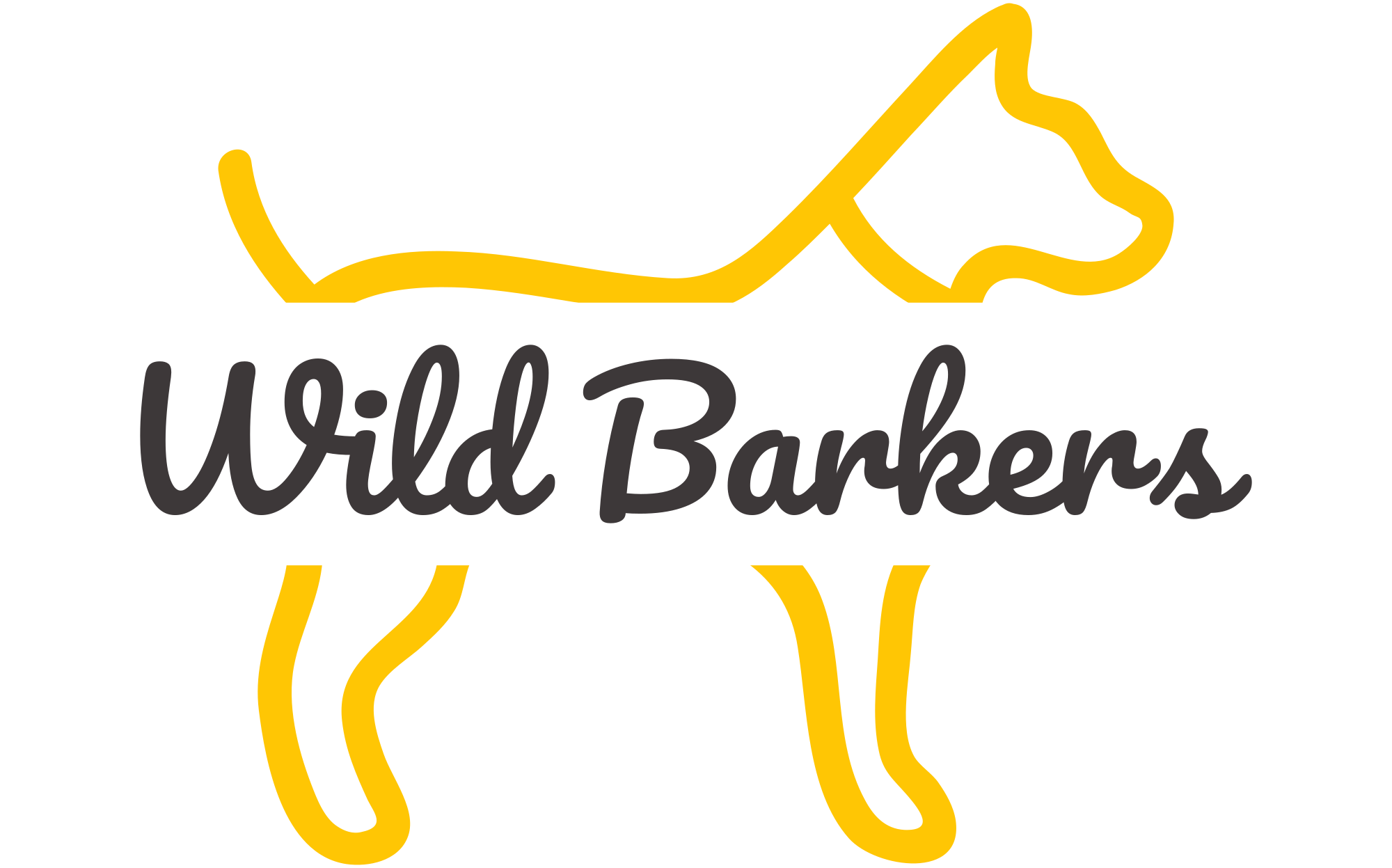







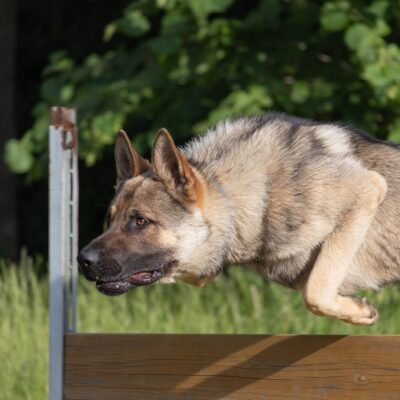
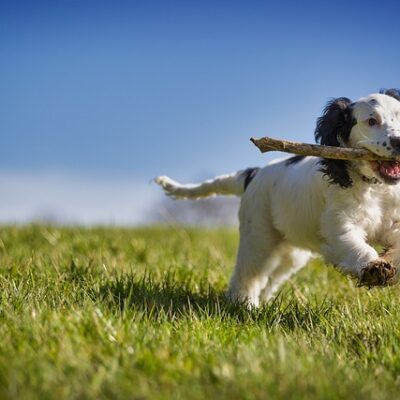
No Comment! Be the first one.